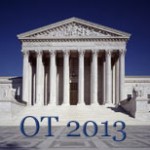The NBA, Television Broadcasting Rights, and Collective Bargaining
Television broadcasting rights in professional sports are a huge chunk of the revenue equation for professional leagues, and it isn’t very hard to see how that is the case. For example, the current NBA TV deal is worth about $930 million annually. In 2016, this deal is set to expire and current reports indicate that an extension is in the works that will pay the NBA over $2 billon annually for the rights to broadcast games on Turner and ESPN networks. When this deal comes to fruition, the revenue generated by the TV deal will dwarf the money coming in from any other source.
While the value of the NBA’s television broadcasting rights are staggering, the most interesting aspect of the new deal is how it will affect the collective bargaining process. In 2011, the NBA suffered through a lockout where owners claimed to be losing hundred of millions of dollars each year. For this reason, the owners argued, the player’s cut of the revenue needed to be scaled back. By the time the lockout ended, the owners had modest success in achieving this particular goal, pinning the player’s share of basketball related income back to between 49% and 51%. The previous basketball related income split was approximately 57–43% in favor of the players.
With the television revenue doubling by 2016, the owners will not have a leg to stand on if they again try to argue that teams are losing money. Considering the amount of money set to be on the table, the players are likely to fight for a bigger chunk. And if the owners aren’t reasonable about it, the league could be looking at another lockout.

